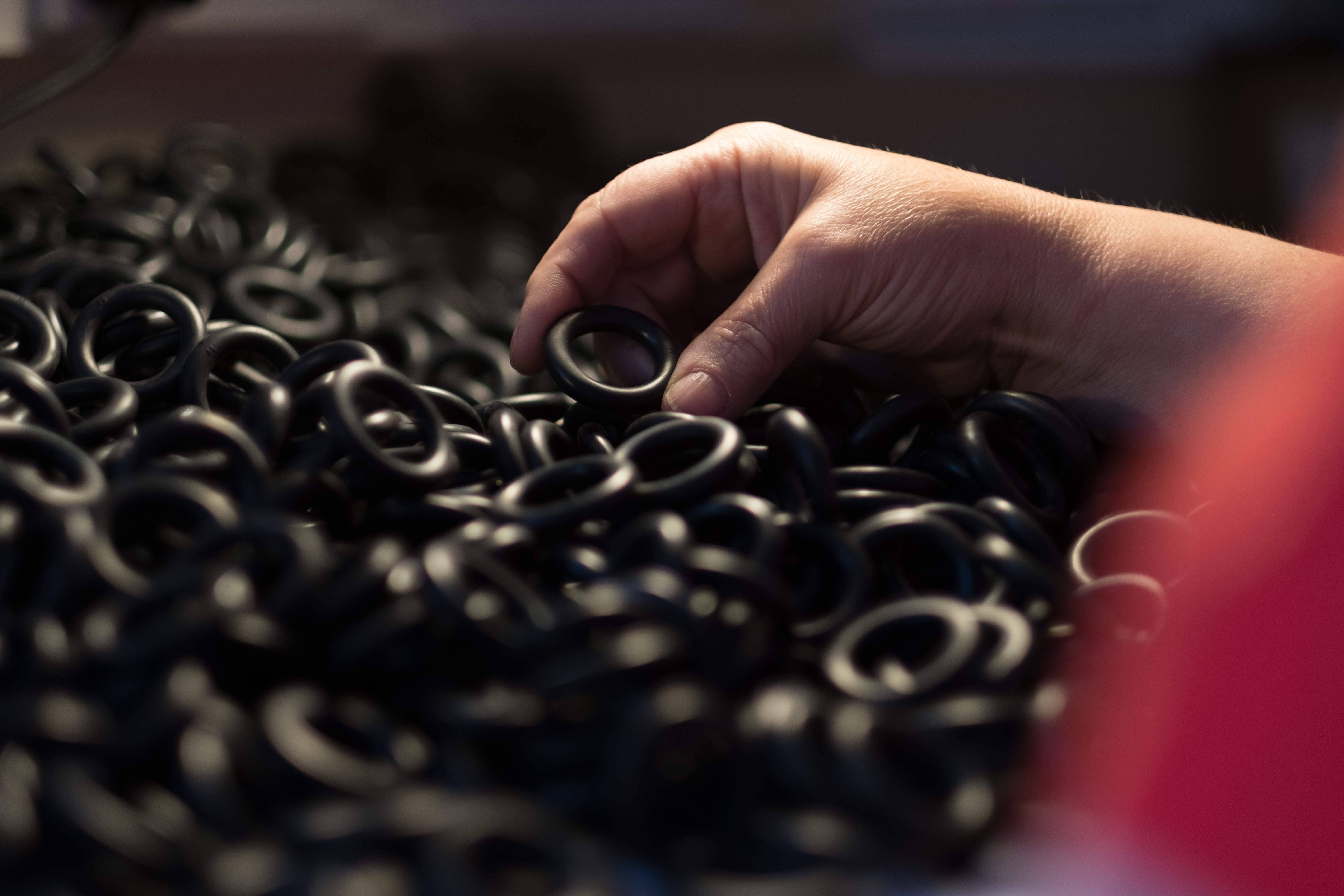Accurate manufacturing with quick set up times
Transfer moulding shares similarities to both the compression moulding process and injection moulding. Like compression moulding, transfer moulding uses a free standing tooling in a hydraulic heated press but has the addition of a transfer pot. This transfer pot will have feed hole(s) to the cavity(s) and a transfer pip will be visible on the parts until removed by finishing processes leaving a witness mark.
The transfer moulding process uses pre-formed rubber blank which are placed into a “transfer pot” located between the top mould plate and a plunger. When the mould is closed and loaded into the press, the material is compressed by the plunger and transferred though sprues into the mould cavity below. When the cavity is filled, excess material spills out, flows into overflow grooves or remains in the transfer pot. The cure completed for the given period. When the cure is completed, the mould is opened and the product is de-moulded. The pot is emptied of excess rubber, reloaded with a new blank and the mould is re-assembled to mould the next part.
